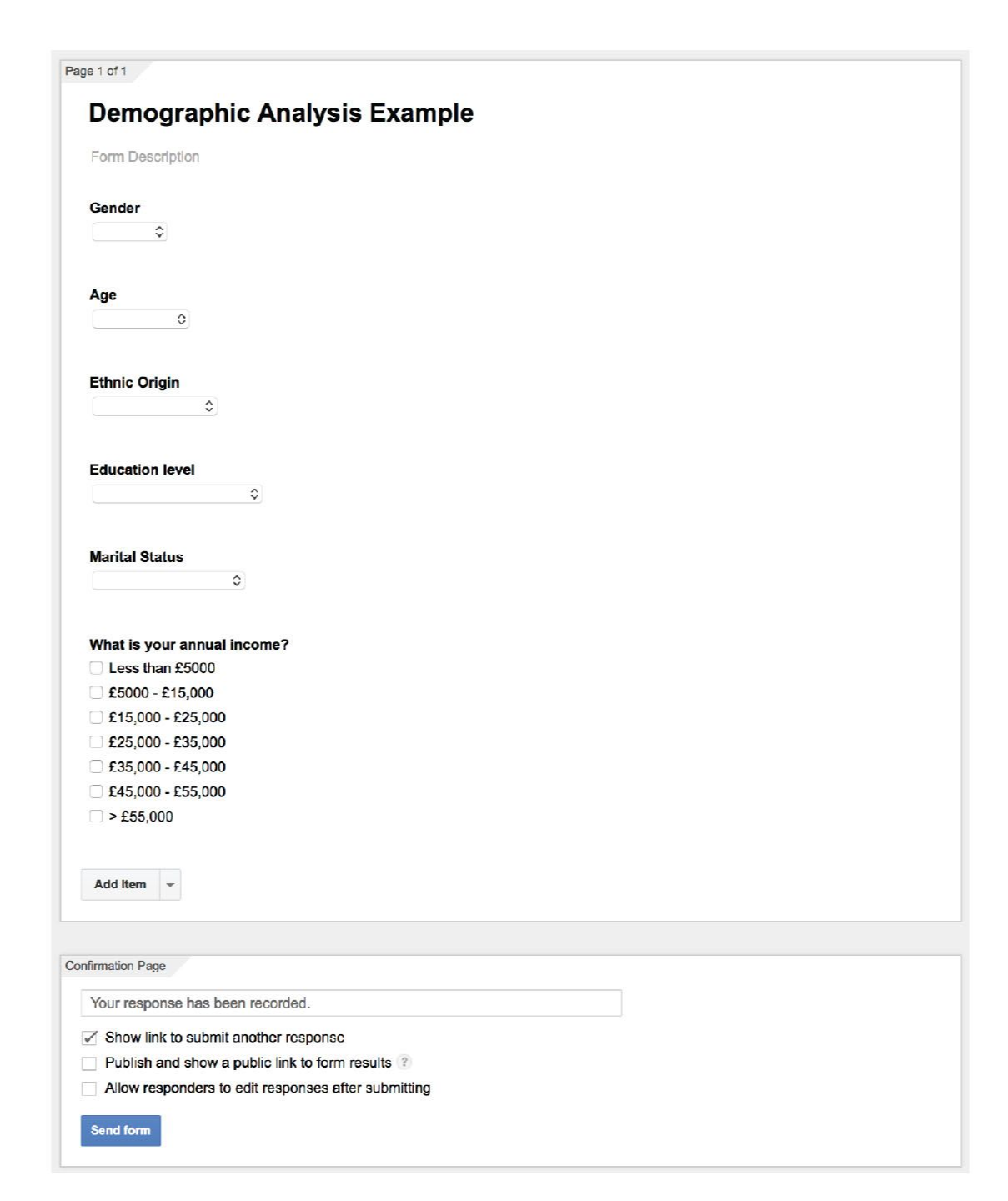The Importance of a Customer Profile
Any business comes with a number of parameters that determine its viability and potential to succeed.
One of the first key things to understand is target audience.
A target audience is a group of people defined by various common attributes and characteristics most likely to purchase your product or service.
Defining this audience is an important part of creating any type of successful strategy.
First thing to consider is the type of business you are.
A face to face business has geographical constraints and ultimately a catchment area from which your customers will come from. This often means that your 'niche' could be dictated by your location as opposed to your skillset or perceived 'ideal' customer.
Factors down to facility location, parking, changing and showering facilities all play a role in who your facility can cater for.
An online service doesn't have those same constraints and customers can come from a much wider catchment area. In many cases, devoid of language barriers the only limitation comes from the ability to provision certain services across different regions and countries.
How much do you know about nutritional provisions across different countries and regions?
Do you have the same service contacts or provisions available that currently make up your service model?
Physios, nutritionists, food delivery etc?
If you have a current business this might be an analysis of existing consumers. In most cases you will find common characteristics and behaviours. Consider your clients, your social media channels, your subscribers and you can even deeper looking at payment and device preferences. All data that can drive specific parts of your business.
For example, an online shoe seller may think that their potential customers are all the people who need shoes, virtually everybody in the world but the group of people looking for elegant looking sneakers are probably different than those searching for waterproof trekking boots.
Investigating your digital brand's existing audience can help narrow the target audience. For the online shoe seller, it will be important to look at the common characteristics and behaviours of existing customers and followers.
Consider social media channels, subscribers, geographical locations and even payment preferences to help narrow the target audience.
We need to find our customers, evaluate them, communicate with them and ultimately as businesses, monetise what we can offer them to improve their lives.
Whether you're a gym owner, a manager or a self-employed trainer failing to understand your consumers' specific needs, fears and emotional triggers, you will inevitably fail to satisfy a considerable amount of potential customers needs.
Depending upon the type of business you have, you will have a number of restrictions placed on it with respect to its consumer reach.
A gym for example, has geographical constraints. A catchment area for it's consumer.
Catchment areas can be calculated by simple buffer zones, walking or driving time to the location and even mobility pattern data, painting a vivid picture of where your customers visit your business from.
Demographics
Dividing your market according to age, religious belief, gender, ethnicity, income and education is what we call demographic segmentation. This is critical information if we are to understand what our market wants, needs and how we can strategically market to them.
This is all readily available information and can be taken from census data, from membership application forms and from merely observing the people that actively populate your gyms, areas, social media platforms and such like.
This allows you to identify the primary needs and wants of your potential customers.
A fundamental way to think of this is that promoting yourself as a strength and conditioning coach in a gym that doesn't cater to athletes or indeed has any as members. This means you have zero appeal or anything in common with what your customer wants or desires.
You would be surprised how many coaches are failing to recognise their base demographic and instead spend their careers trying to 'convince' those around them to conform to what they offer.
Strength and Conditioning coaches are trying to convince the general populous that strength is their primary goal. People would typically welcome it, but in many cases, it isn't indeed what they primarily want or think they want
Years ago when kettlebells first hit the mainstream market. The practitioners championing them spent years trying to convince bodybuilders it was the next big thing for them. They forgot about and disregarded its merits and the application it was intended for. Instead, they attempted to sell and market it to the wrong people.
This is partly why as coaches APPLICATION, APPLICATION and more APPLICATION is what we must consider with all methodology. Diets, training systems and business methods. We must understand the pros and cons of all of them and alongside this, the correct people or demographics they apply too.
Identifying Your Demographic
Identify your:
- Local Area Demographic - Those within the catchment area of your services or business.
- Business Demographic - Those currently using your services or business.
- Social Demographic - Those who follow you on social media.
If you don't have much data to go at that's fine but become adept at gathering this. Even if it means sitting in your gym or outside of it one lunchtime to see who is in the local area and what categories they may fit into. Something that simple can serve your business incredibly well.
There are a whole bunch of paid resources online that can analyse data for you, but at this stage, the focus is on getting as much data for the minimal outlay allowing your business to grow organically.
Tip: Try to collate this data using a digital method. Handling hundreds or thousands of handwritten forms takes a lot of valuable time.
Time is money.
Local Area Demographic
Local area data can be gathered from census data and national statistics. You will need to do a Google search to find out about your local area.
Each country will have its own companies that handle local data.
UK– Office For National Statistics
USA – United States Census Bureau
Australia – Australian Bureau of Statistics
Europe – Eurostat
Business Demographic
There are several ways to identify your demographic as a coach or facility. Most of the essential information should be accessible through your club membership system provided you can get access to it or merely produce a survey to present physically or send to your customers.
The biggest challenge with any survey is response rate. Understandably this can easily compromise the validity of your data.
After sending an email out getting someone to click your email and enter your survey will be the most significant difficulty in gathering responses.
When we get into marketing in greater depths over the coming months, we can take a better look into this.
There are several online surveys that you can utilise for free. Google forms or Survey Monkey are two good examples.

Fig 1.1 Shows an example of basic demographic analysis.
When asking your demographic for this fundamental data you need to incentivise them in some way to put together the information for you. For example, something for free or entry into a competition. Gym owners may be wise to get physical members to fill out upon entry. Coaches get your current clients to fill out the data. Use a tablet or a laptop and offer a chance to win a free PT session or months membership.
Remember though that those already within your facility or being trained by you are there for a reason. Therefore, you have fulfilled one or several of their requirements. You also need to understand those that aren't entering your facility or undertaking your services. Knowing your current demographics will allow you to realise who at present you are appealing too. Next week we will break this down more and start to look at psychographic segmentation.
A clear understanding of the reason people are IN and a reason why they aren't is tantamount to understand the needs and wants of your customers.
Social Demographic
Those of you utilising social media will also be able to pull up the analytics or insights into some of this basic data.
There are many great analytics tools for both web and social analytics. Without such tools, we're driving blindly.
Google Analytics is probably the most commonly used analytics tool however there are other mainstream alternatives available.
1. World Health Organisation – http://www.who.int/en/
2. Target Group Index – http://www.kantarmedia.com/global/our-solutions/consumer-and-audience-targeting
3. Mofluid.com. (2018). Best Google Analytics Alternatives. [online] Available at: https://mofluid.com/blog/best-google-analytics-alternatives/ [Accessed 16 May 2018].

